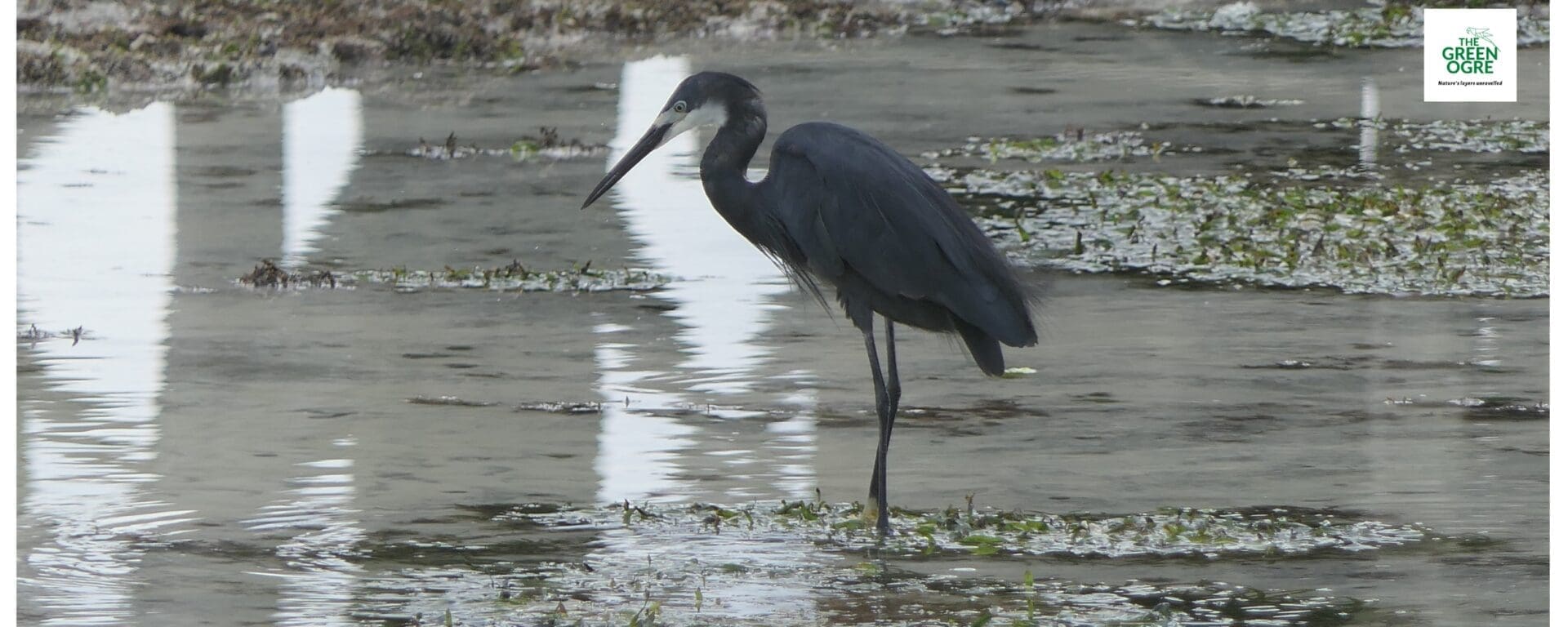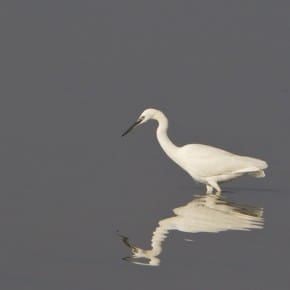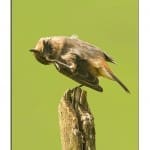The intriguing Dimorphic Egret that occurs commonly in East Africa closely resembles the Western Reef-Egret, until you look for the differences and subtract the similarities. Easy, huh? You wish!
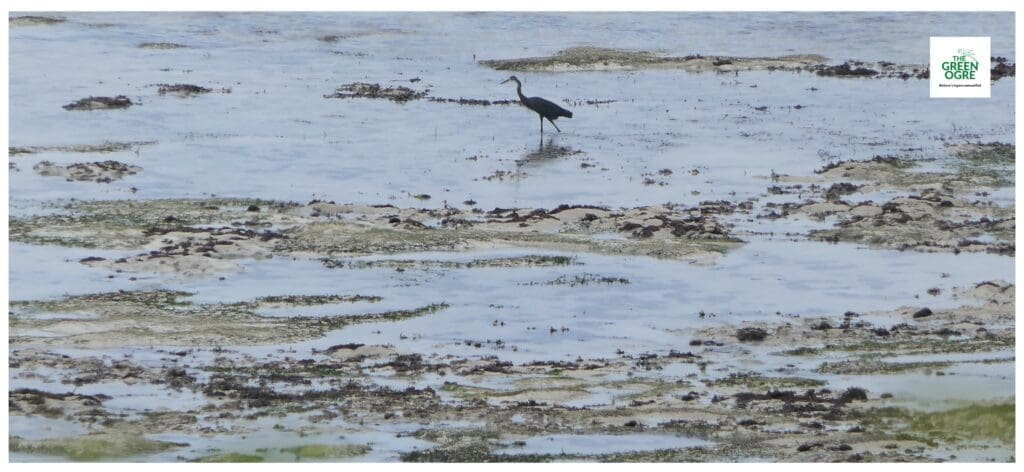
In May 2022, I spent the final days of a family holiday in East Africa on the northeastern coast of the tiny island of Zanzibar. Wandering along the coral-rag coastline of Nungwi at the northern tip, I spotted a somewhat familiar-looking heron fishing energetically among the rock pools at low tide. Delighted to see a dark-plumaged heron for the first time on that sojourn in Africa, I put it down as a Western Reef-Egret (Egretta gularis).
The dark truth about egrets
There were at least three or four birds on that short stretch of beach. Surprisingly, eBird flashed a warning that the species was uncommon or rare, and demanded a justification. I put in comments, added photographs, submitted the checklist, and didn’t think much of it. Although, it did nag me a bit that the bird that I had observed looked a bit unlike the Western Reef-Egrets that I was familiar with (having seen them on the Arabian Sea coasts in India), in that it had too much white around the face.
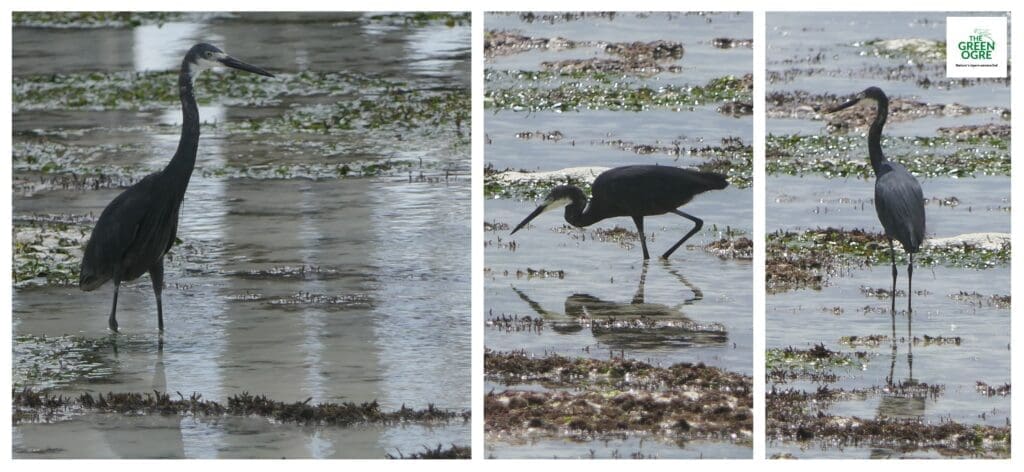
I took as many pictures as I could, and watched each bird as closely as it would allow me to, before shinier things like hermit crabs and a really fetching East African Snake-eyed Skink claimed my attention. Back home in India, an eBird regional reviewer emailed me about my observation. My bird, apparently, was not a Western Reef-Egret! Reading the email, I realised that I was hearing about the Dimorphic Egret for the first time.
What exactly is a Dimorphic Egret?
A few frantic web searches revealed that I wasn’t the only one with this question on my mind. eBird lists it as Little Egret (Dimorphic) Egretta garzetta dimorpha. Okay, not a full species, but a sub-species. Still substantially intriguing.
I loaded up all my photographs (I take too many) and studied the individuals closely. Like the more familiar Little Egret (of which I have known only all-white morphs), it had bright yellow feet. Poetically inclined birdwatchers like to call these appendages “golden slippers” (what a nice way to remember the bird’s field identification marks, no? Props to Deepa Mohan for sharing that with me).
I thought I had done my homework, but here I was completely flummoxed. Bird Count India has a very helpful article on differentiating between Little Egrets and the white morphs of two species of reef egrets (Pacific and Western), but it had no more than a passing mention of a dark morph of the Little Egret, with the comment that this colour morph is ‘very rare‘. Another unhelpful point: “When feeding or resting, the Western Reef-Egret usually holds its body more horizontally than the Little Egret, though this may not always be the case.”
Dimorphic or not, what’s to stop a Western Reef Egret from looking like a Little Egret?
Thumbing through photographic records of various white-morph Little Egrets from India, I found that, whether they were in breeding plumage or not, they all had a slender, gracile build and slim black legs ending in the trademark golden-yellow feet. Breeding birds have long, tassel-like plumes sweeping back from the head.
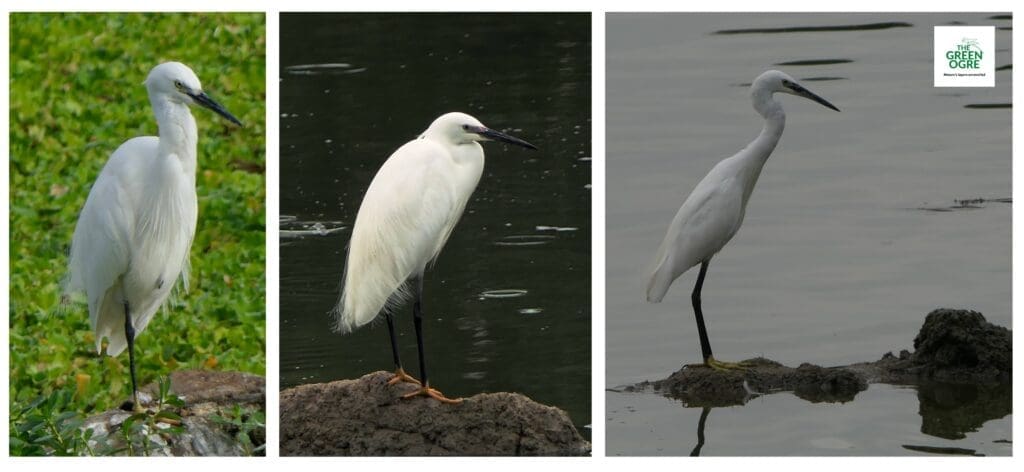
Now, over to the Western Reef-egret. Avibase lists it as having two sub-species with a collective distribution ranging from southern Europe and Africa to parts of Asia. Structurally, the Western Reef-egrets that I have observed on the west coast of India, particularly in Kutch, Gujarat, and in coastal Karnataka, weren’t as slender. Their legs could have been thicker, but I can’t say for sure because I wasn’t scouting for supermodels.
Take a look for yourself.
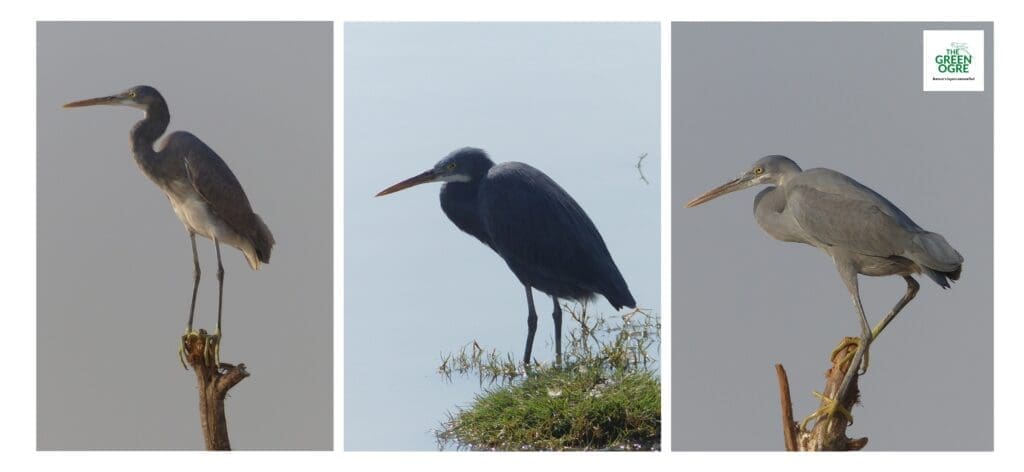
Regret the inconvenience
Over at BirdForum, the debate is inconclusive, with most conversations restricted to white morphs. On the other hand, AviBase lists the Dimorphic Egret as a distinct species (Egretta dimorpha) while Clement’s Checklist makes no mention of it. I found another interesting discussion on BirdForum about dark-morph birds seen in Zanzibar (like mine), and I reproduce this excerpt from there for your reference because it mirrored my quandary to the letter:
I imagine you were considering Little Egret because of the ‘clear-cut yellow feet’ as described in Stenvenson and Fanshawe’s, I can however assure you that this is by no mean an ID feature (otherwise it would mean that the Tanzanian Coast is full of dark morph Little Egrets…).
From my own experience, Dimorphic appears a bit longer billed than Little, the bill is also deeper based with a slightly drooping tip (all this rather subtle…)…
Appears longer-billed — does that mean it actually has a longer bill, or that birds with dark plumage tend to create the impression of having larger bills? There must be a law that I don’t know much about.
Multiply now, classify later
Another post on a similar thread opines that the birds of these two acknowledged species — the Little Egret and the Dimorphic Egret — “hybridise freely” so let me not to the marriage of true minds admit impediments. While we allow the birds have a go at taking Darwin and Dawkins to the cleaners, the unsuspecting birdwatcher is tossed into the midst of a pitched battle where lumpers and splitters are going at each other’s binomials with blunt weapons.
Here’s the thing. Unlike elite ornithologists and taxonomists, we plebian birders draw conclusions from watching live, highly mobile birds in the great outdoors, and not stiff, dead, compliant corpses in museum collections. There’s the factor of distance and various other permutations and combinations of viewing conditions, as also the additional challenge (unlike one is fortunate to be part of a mist-netting and ringing exercise) of not having the luxury of using callipers or measuring tapes on our living birds. So, whether an egret is gracile in form or not, whether its legs be thick or slender… these are topics marooned in the quagmires of heated opinion best recollected along with a little tipple at the end of a long and satisfying day of birding.
So, until a winner emerges from these systematics skirmishes and pronounces a new species, or sends one back to its ancestral clade with its cousins, let’s just watch egrets without regrets.
But closely, ok?
Hey, do you think that one’s bill is a little longer?
- TL;DR – Death Stalks Like A Marabou Stork - July 24, 2024
- Dimorphic Egret – Meet this East African mystery bird - June 8, 2024
- Encounter: Northern Treeshrew in Arunachal Pradesh - May 19, 2024

